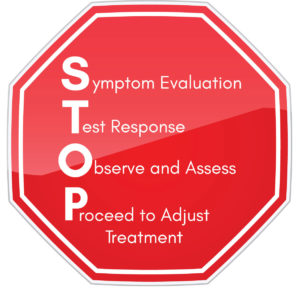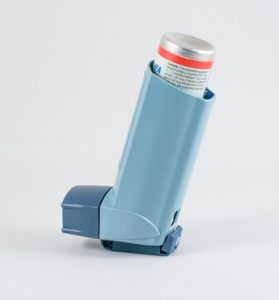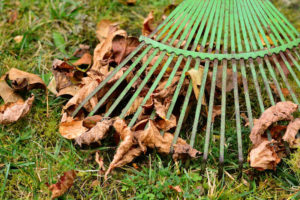 Each May we celebrate Asthma and Allergy Awareness month. Additionally, the first Tuesday of May is also designated as World Asthma Day. This year it falls on Tuesday May 7.
Each May we celebrate Asthma and Allergy Awareness month. Additionally, the first Tuesday of May is also designated as World Asthma Day. This year it falls on Tuesday May 7.
The theme for this year’s World Asthma Day is ‘Stop for Asthma’. Each year the Global Initiative for Asthma (GINA) suggests activities to support asthma awareness in our communities.
Over 6 million children, and 26 million people total live with asthma in the United States.
We see the impact of asthma in missed days of school and increased emergency room visits due to out of control symptoms. Additionally sufferers often experience increased complications during respiratory illnesses like cold and flu.
Constant evaluation and adjustment of treatment protocols is the key to controlling asthma. Since there is no cure for asthma the goal is management of symptoms to improve quality of life.
Visit the CDC website for helpful resources for people with asthma, their friends and families, teachers, and coaches. Resources include tips for creating and updating your asthma action plan and how to use your inhaler. Check out the Meet the Challenge page for recommendations on asthma and physical activity.
Active Healthcare Donates Nebulizers
 Active Healthcare recently donated a significant number of nebulizers to the Wake County Public School System. The nebulizers will be used in elementary schools by school nurses to help students manage their asthma.
Active Healthcare recently donated a significant number of nebulizers to the Wake County Public School System. The nebulizers will be used in elementary schools by school nurses to help students manage their asthma.
Active Healthcare’s Back 2 Life Program works with local medical practices and community partners in the Triangle area of North Carolina to help facilitate various medical equipment supplies to needy patients.
We collect and refurbish the donated equipment. Visit our website donate nebulizer equipment you no longer need.
Additional Resources
World Asthma Day is an annual event organized by the Global Initiative for Asthma (GINA) to improve asthma awareness and care around the world. A staggering 300 million people worldwide live with asthma.
Global Initiative for Asthma (GINA) – sponsor of World Asthma Day
The CDC website has tons of resources for people with asthma and their families.
Test your asthma knowledge for Asthma and Allergy Awareness month: 7 Asthma Myths

















 Your desk is ground zero for germs in the office. Recent studies showed that your desk can have 400 times more bacteria than a toilet seat. These unfriendly office visitors can survive up to three days on these surfaces. Everyone should disinfect their desk work surfaces including the keyboard, mouse and phone on a regular basis, but during cold and flu season it is even more important.
Your desk is ground zero for germs in the office. Recent studies showed that your desk can have 400 times more bacteria than a toilet seat. These unfriendly office visitors can survive up to three days on these surfaces. Everyone should disinfect their desk work surfaces including the keyboard, mouse and phone on a regular basis, but during cold and flu season it is even more important. The dirtiest parts of your home include the kitchen sink and drain, along with the sponges and dish rags you use to wipe the counter or wash dishes.
The dirtiest parts of your home include the kitchen sink and drain, along with the sponges and dish rags you use to wipe the counter or wash dishes. 
 One of the favorite kid friendly attractions at the fair is the petting zoo. Take the proper steps to protect yourself when visiting all of the adorable baby animals. Close contact with animals can trigger an asthma attack because you may come in contact with proteins that are found in animal saliva, skin flakes, urine and feces.
One of the favorite kid friendly attractions at the fair is the petting zoo. Take the proper steps to protect yourself when visiting all of the adorable baby animals. Close contact with animals can trigger an asthma attack because you may come in contact with proteins that are found in animal saliva, skin flakes, urine and feces.


 We hear all the time from multiple sources to get more exercise. Everyone has their reasons for not getting enough. We all know we should do it more, but feel like we don’t have enough time or energy to do so. If you suffer from asthma, you may fear that working out would make your symptoms worse. Here are some of the best options for exercising with asthma
We hear all the time from multiple sources to get more exercise. Everyone has their reasons for not getting enough. We all know we should do it more, but feel like we don’t have enough time or energy to do so. If you suffer from asthma, you may fear that working out would make your symptoms worse. Here are some of the best options for exercising with asthma Asthma is a challenging, but very treatable illness. There are many medications and tools available to help relieve symptoms. Did you know that asthma prevention can start in your kitchen? Not all foods are created equal. What foods might be best for asthmatics? There are even healthy foods that may worsen your asthma symptoms.
Asthma is a challenging, but very treatable illness. There are many medications and tools available to help relieve symptoms. Did you know that asthma prevention can start in your kitchen? Not all foods are created equal. What foods might be best for asthmatics? There are even healthy foods that may worsen your asthma symptoms. Summer is coming to a close for students in North Carolina. The change of seasons and environment can spell trouble for asthma and allergy sufferers. They already know their at-home triggers and how to combat them, but have less control over their environment at school. Common classroom triggers include pollen, dust mites, mold, chalk dust, and pet dander. With the help of school administrators and parents, students can remain focused on their studies and less on their allergies.
Summer is coming to a close for students in North Carolina. The change of seasons and environment can spell trouble for asthma and allergy sufferers. They already know their at-home triggers and how to combat them, but have less control over their environment at school. Common classroom triggers include pollen, dust mites, mold, chalk dust, and pet dander. With the help of school administrators and parents, students can remain focused on their studies and less on their allergies.

 Plants are frequently used to mediate the effects of pollution and toxins in our external environment. Our indoor environments can contain toxins such as volatile organic compounds (VOCs). Two common indoor VOC pollutants are benzene and formaldehyde. Benzene can be found in plastics, fabrics, pesticides, and cigarette smoke. Common household items such as dish detergent, fabric softener, and carpet cleaners all may contain formaldehyde.
Plants are frequently used to mediate the effects of pollution and toxins in our external environment. Our indoor environments can contain toxins such as volatile organic compounds (VOCs). Two common indoor VOC pollutants are benzene and formaldehyde. Benzene can be found in plastics, fabrics, pesticides, and cigarette smoke. Common household items such as dish detergent, fabric softener, and carpet cleaners all may contain formaldehyde.
 Spring is in the air, and as temperatures rise, an asthmatic’s symptoms reach their peak.
Spring is in the air, and as temperatures rise, an asthmatic’s symptoms reach their peak.  It’s no secret that tobacco is one of the most common asthma triggers. Tobacco smoke irritates the airways and causes your lungs to produce more mucus. In addition, it weakens the tiny hairs called cilia that sweep away mucus and other irritants that settle in your airways.
It’s no secret that tobacco is one of the most common asthma triggers. Tobacco smoke irritates the airways and causes your lungs to produce more mucus. In addition, it weakens the tiny hairs called cilia that sweep away mucus and other irritants that settle in your airways.













